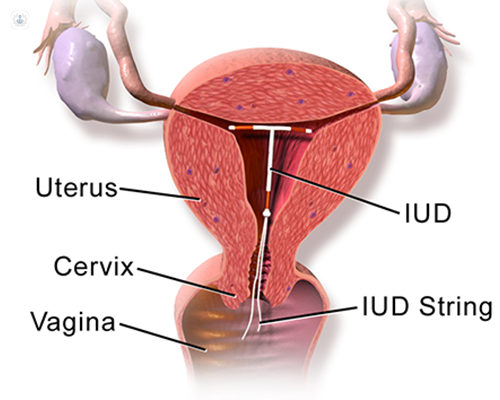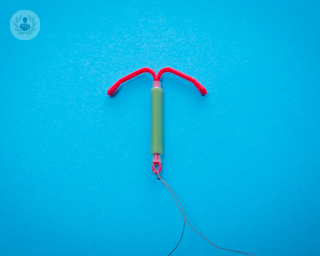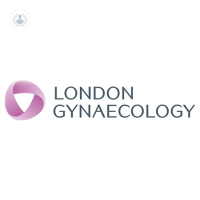Intrauterine device (IUD)
Mr Jullien Brady - Obstetrics & gynaecology
Created on: 11-13-2012
Updated on: 12-19-2023
Edited by: Sophie Kennedy
What is an intrauterine device (IUD)?
An intrauterine device, more commonly known as an IUD, is a contraceptive device. It is a small copper device that is T-shaped and inserted into the uterus. No hormones are released by this device, as copper changes the cervical mucus, making it difficult for sperm to reach an egg and survive. This change in mucus also stops a fertilised egg implanting itself. An intrauterine system (IUS), releases progesterone to prevent pregnancy.

Why would you have an IUD?
It is a highly effective contraceptive method, which is more than ninety-nine per cent effective when inserted correctly. Once it is implanted, it remains effective for 5-10 years, depending on the type used. It is not necessary to have any rest period and once it is removed, your fertility returns to normal immediately. It is important to note that whilst the IUD is a form of contraception, it does not protect you against STIs.
How is an IUD inserted?
The IUD can be inserted at any point in your menstrual cycle and will protect you from pregnancy immediately. An appointment to insert an IUD takes just thirty minutes and can be done by either a trained nurse, GP or gynaecologist. The vagina is opened using a speculum, through which the IUD is inserted into the uterus. Once the IUD is placed in the uterus, the specialist removes the speculum leaving two small cords that hang inside the vagina. The goal of the cords is to verify that the IUD is in the right place, as well as to help extract it when the time is right.
Preparation for the IUD:
Before having an IUD inserted, it is important to understand your options for contraception. IUDs are often used when you want to avoid the risks of birth control hormones, when they cannot be used, or when you want long-term protection against pregnancy.
Care after implantation:
The day of your consultation to insert the IUD, it is advisable to be accompanied by a friend, partner or family member, so that later they can take you home. Some women may have cramping, back pain in the lower back and spotting for a couple of days. It is important to have a check-up by a GP 3-6 weeks following the insertion to ensure it is placed correctly. If you have your period when it is inserted, you should avoid using tampons for the first 48 hours.
Advantages and disadvantages of the IUD:
Advantages:
- It works straight away
- It is more than 99% effective when inserted correctly
- It provides long-term protection (5-10 years)
- It is safe to use whilst breastfeeding
- No hormones are released, so there are no hormonal side effects (e.g. tender breasts, acne)
- It is not affected by other medicines or illness
Disadvantages:
- Some women experience heavier or more painful periods following IUD insertion
- There is a small risk of pelvic infection if an infection forms after the IUD fitting
- If the IUD fails and you become pregnant, there is an increased risk of having an ectopic pregnancy













